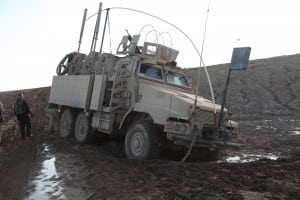
After 10 years the mine-resistant ambush-protected vehicle (MRAP) program office furled and sheathed its colors June 9 in a ceremony that marked the end of its independent existence.Amid escalation of U.S. military involvement in the two wars for which MRAPs were rushed to the field and became iconic, the behemoth vehicles are taking a back seat. Opened in 2007, the MRAP program office oversaw the swift fielding of trucks designed to withstand roadside bomb blasts that were taking a heavy…

 By
By 











